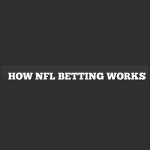Understanding Sports Betting Odds
Sports betting odds provide crucial insights for bettors looking to make informed decisions before placing their wagers. These odds represent the probability of a specific outcome in a sports event and help determine the potential payout for a successful bet. Understanding how to read and interpret these odds is fundamental for any individual engaging in sports betting.
By familiarizing yourself with the different types of sports betting odds, such as decimal, fractional, and American odds, you can gain a better understanding of how bookmakers present the likelihood of various outcomes. Each type of odds format has its unique way of representing the probability of an event occurring, and comprehending these nuances can empower bettors to make strategic choices when it comes to placing their bets.
Types of Sports Betting Odds
When it comes to sports betting, there are several types of odds that bettors encounter. The three main types are decimal odds, fractional odds, and American odds. Decimal odds are commonly used in Europe and Australia, and they represent the amount a bettor will receive for every unit wagered. For example, if the decimal odds are 2.50, a $10 bet would return $25 (including the stake).
Fractional odds are more traditional in the UK and are displayed as a fraction, such as 5/1. These odds indicate the profit a bettor will make if they win, relative to their stake. In this example, a $10 bet at 5/1 odds would result in a $50 profit, plus the initial $10 stake returned. American odds, also known as moneyline odds, are commonly used in the United States. Positive odds show how much profit a $100 bet would make, while negative odds indicate how much you need to bet to make $100 profit.
Decimal Odds Explained
Decimal odds, also known as European odds, are one of the common ways to display betting odds in the sports betting industry. These odds represent the amount a bettor will win for every $1 wagered. For example, if the decimal odds are 2.50 and you bet $10, you would win $25 ($10 x 2.50).
Unlike fractional odds, decimal odds already include the stake in the potential payout, making them simpler for beginners to understand. For instance, decimal odds of 3.00 mean that a winning bet of $1 would return a total payout of $3, including the original stake. The higher the decimal odds, the greater the potential return, but also the lower the likelihood of winning according to the implied probability.
Fractional Odds Explained
Fractional odds are a common way to represent betting odds in the world of sports betting. These odds are displayed as a fraction, such as 2/1 or 5/2. The first number in the fraction represents the potential profit if you were to bet the amount of the second number. For example, with odds of 2/1, for every $1 you bet, you would make a profit of $2 if you win.
In fractional odds, the denominator (the second number) indicates the amount that you need to bet, while the numerator (the first number) shows how much profit you would make if your bet is successful. For instance, with odds of 5/2, you would need to bet $2 to potentially make a profit of $5. Understanding fractional odds is essential for those looking to engage in sports betting as it helps in calculating potential winnings and making informed betting decisions.
American Odds Explained
When it comes to sports betting, American odds are a common way for bookmakers to display the odds of an event. These odds are also known as moneyline odds and are represented by either a plus (+) or minus (-) sign in front of a number. The plus sign indicates the underdog, while the minus sign indicates the favorite.
For positive American odds, such as +150, it means that you would win $150 for every $100 risked. On the flip side, negative American odds like -200, indicate that you would need to bet $200 to win $100. Understanding American odds is essential for making informed betting decisions, as they can help you calculate potential payouts and determine which side is favored to win in a particular sports matchup.















